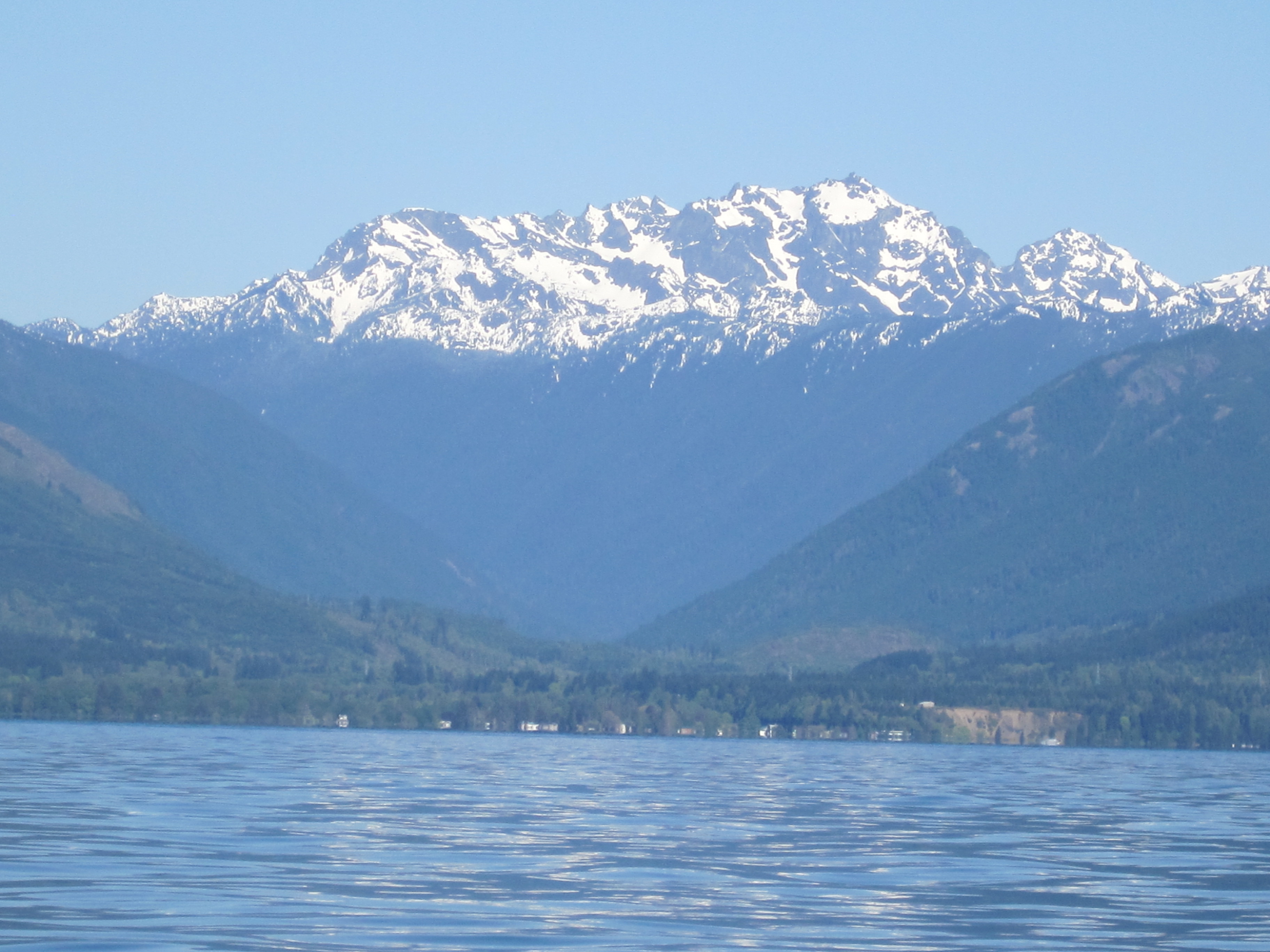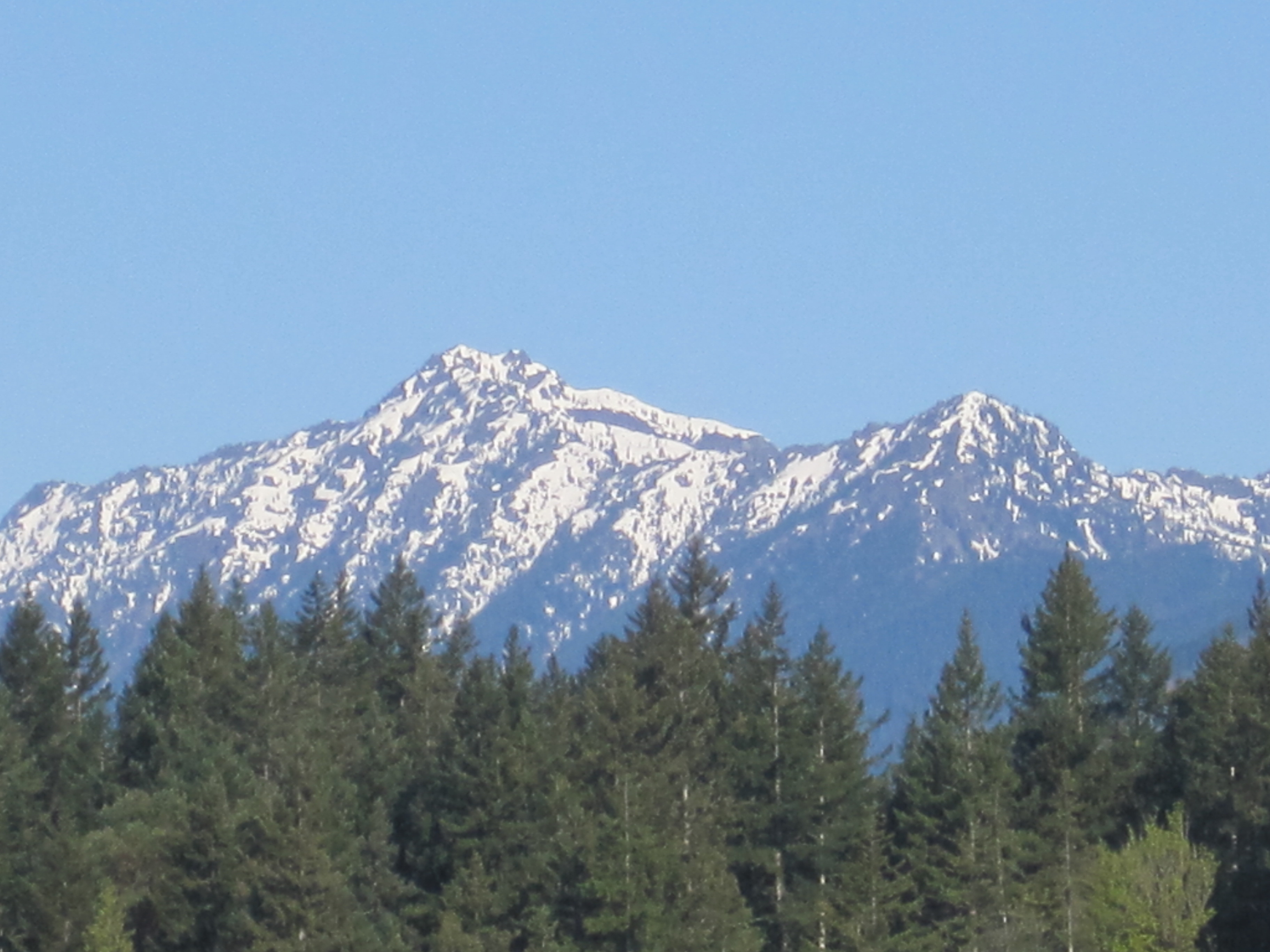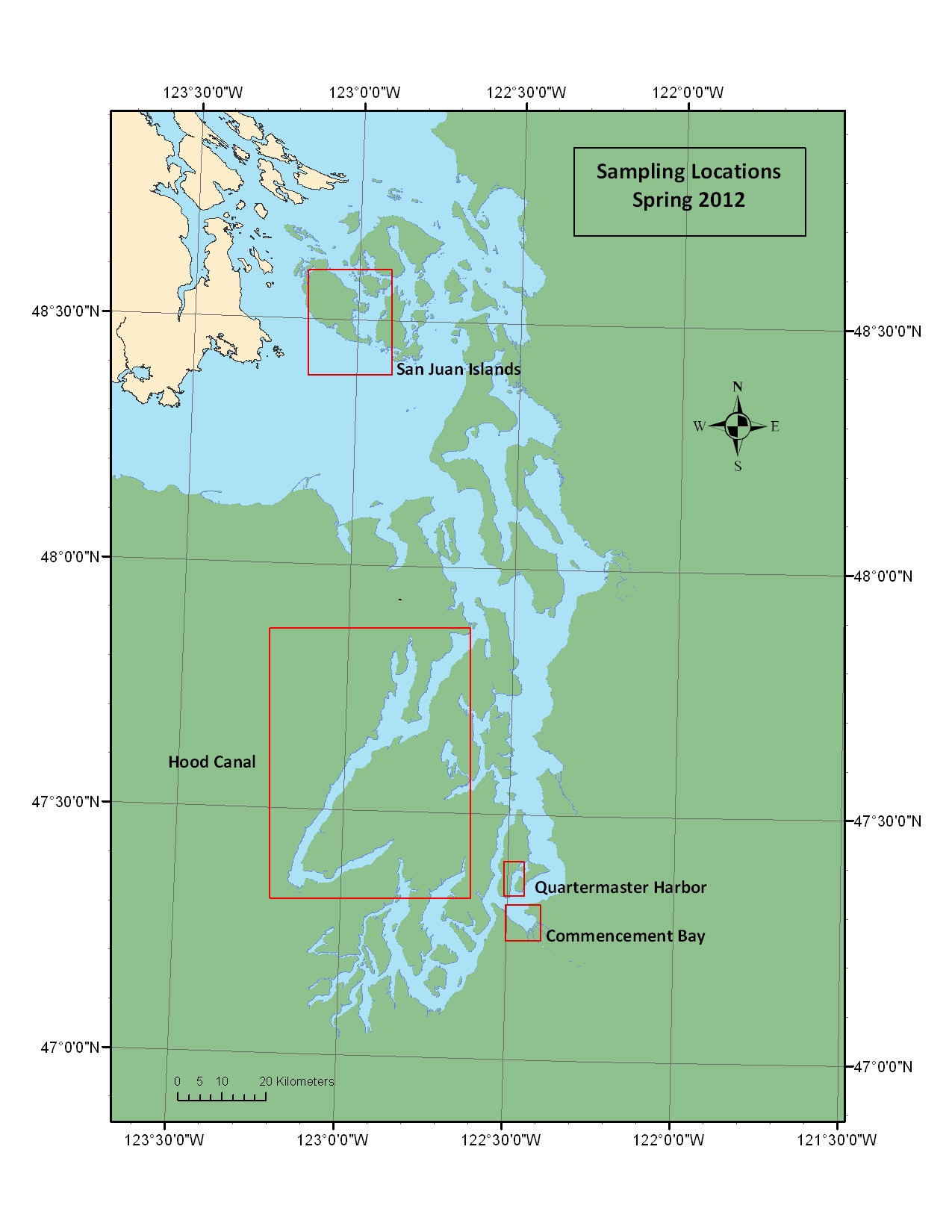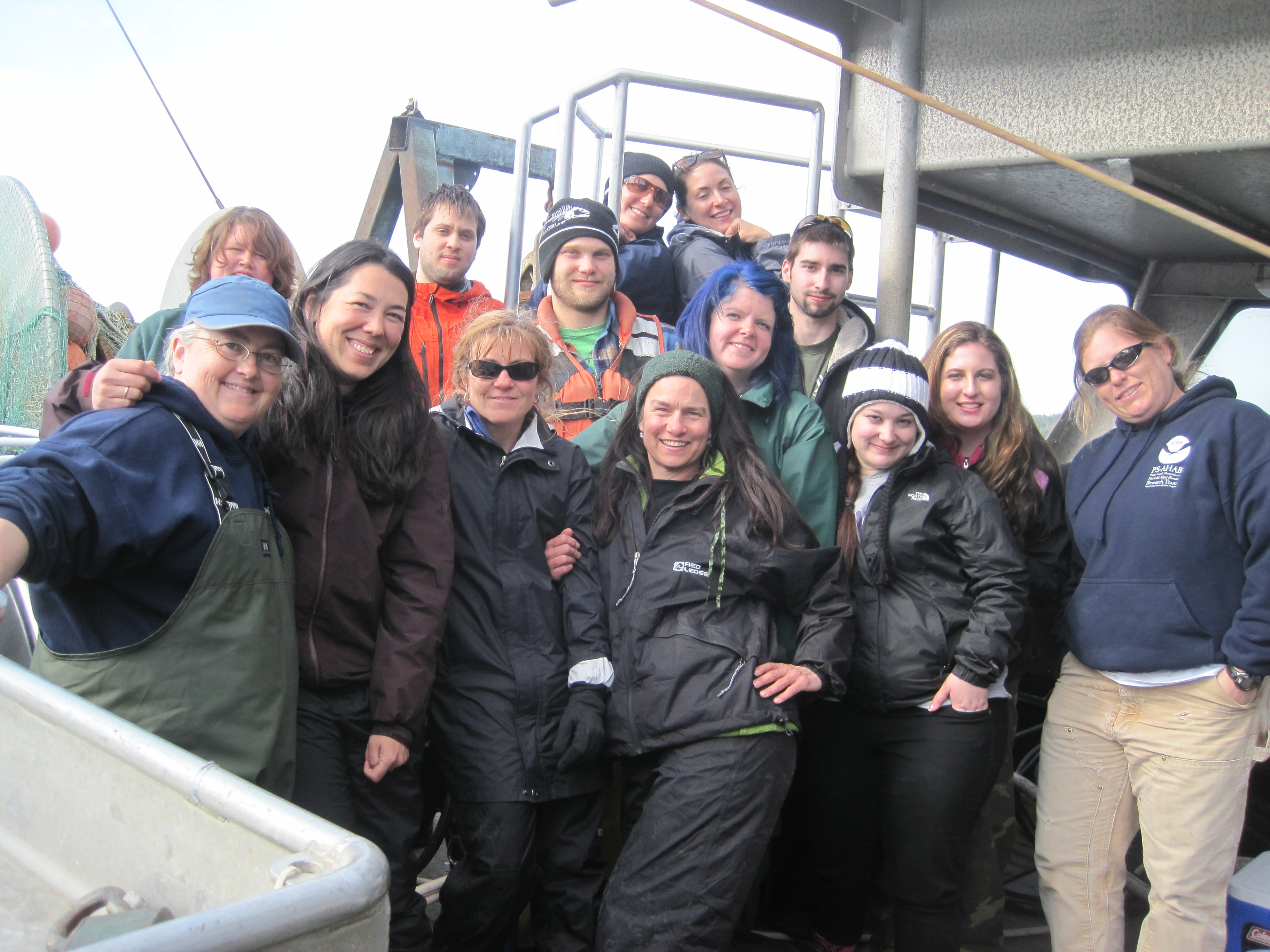
Estuarine Field Studies
University of Washington, Tacoma
TESC 445: Spring 2012

 |
|
 |
| [Main] | [Commencement Bay] | [Quartermaster Harbor] | [San Juans] | [Hood Canal] | [Methods] |
|
| Estuaries Field Studies (TESC 445) is a field course focusing on the study of water bodies that make up the Puget Sound within Washington State. Samples and data were collected from four different areas of Puget Sound; [Commencement Bay], [Quartermaster Harbor] [San Juans], and [Hood Canal] Data was gathered at each area in a number of specific coordinates which are referred to as 'stations'. The parameters of studies included physical conditions, chemical analysis, biological and geological measurements. All data was taken back to the lab for analysis. The sample data that was collected at each station included: temperature, salinity, density, oxygen, fluorescence/chlorophyll, transmissivity, nutrients, phytoplankton, zooplankton, sediments, and microplastics. The description of the methods used at each sampling station can be found on the [Methods] page. The Puget Sound is a large estuary and there are many factors that influence its waters, including its watershed and freshwater inflow, oceanic saltwater influx, natural and human influenced runoff and wastewater treatment effluent. How the water is circulated and flushed is a complex equation of tidal processes, bathymetry, geographic configuration, and the impacts of a growing population. |
 |
|
Cheryl Greengrove: Associate Professor; University of Washington Tacoma Environmental Science Julie Masura: Lecturer; University of Washington Tacoma Environmental Science Dave Thoreson: Captain; Wealander; University of Washington Seattle College of Oceans and Fishery Sciences Tony Miller: Captain; City of Tacoma Research Vessel Michael Roper: Captain; City of Tacoma Research Vessel |
Nannette Huber: TA; Estuaries Spring 2012 Kathy Newell: University of Washington Seattle Research Scientist, Oceanography [PRISM] Kathy Krogslund: University of Washington Seattle Research Scientist, Oceanography [PRISM] Fritz Stahr: University of Washington Seattle School of Oceanography [PRISM] Larry and Marta Hoover: [City of Tacoma Wastewater Treament Plant] Crew of Centennial: Captain David Duggins and First Mate Wolf and University of Washington [Friday Harbor Laboratories] |
| Kendra Baird Michael Barnett Kyra Gagliardi Carolyn Green Cheryl Greengrove Tina Houck Nannette Huber |
 |
Julie Masura Caitlin Olive Samantha Petrie Elisa Rauschl Ian Reeber Jonathan Silas Samantha Steininger |
Past Course Links:
Water Resources and Pollution Spring 2006
Water Resources and Pollution Spring 2005
Water Resources and Pollution Spring 2003
Water Resources and Pollution Spring 2002
Water Resources and Pollution Fall 2002
| [Main] | [Commencement Bay] | [Quartermaster Harbor] | [San Juans] | [Hood Canal] | [Methods] | [Course Photos] |